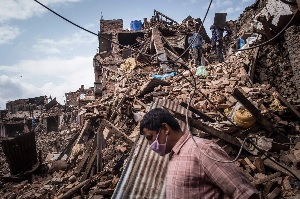Join a powerful, unprecedented alliance for better eye health for all.
Join IAPB-
Choose an alternate language here
Ten days have now passed since Nepal’s devastating 7.8 magnitude earthquake, which struck on 25 April, with its epicenter very close to Kathmandu, Nepal’s capital. With victims’ numbers rising over 7,000 and work to reach survivors with vital supplies now under way, our thoughts are with all those affected from the devastation in that region.

IAPB calls for all recovery and reconstruction efforts to be inclusive and responsive to the needs of all people, including persons with disabilities, in line with the principles of the UN Convention on the Rights of Persons with Disabilities. In 2013 a group of humanitarian organisations (including CBM) and UN agencies released a Guidance note on disability and emergency risk management for health – the guide provides key principles that should underpin practical action in order to address the needs of people with disabilities in case of emergencies.
A number of IAPB members are active in Nepal and some have appeals for funds to help with the response. Below is a round-up of members’ responses to the earthquake (the list is not comprehensive, so feel free to highlight others in the comments section).
Tilganga Institute of Ophthalmology CBM
The Fred Hollows Foundation Helen Keller International
Himalayan Cataract Project American Academy of Ophthalmology
Seva Foundation Nepal Netra Jyoti Sangh
To contribute to general emergency and reconstruction efforts see also appeals from the Disasters Emergency Committee and Unicef.